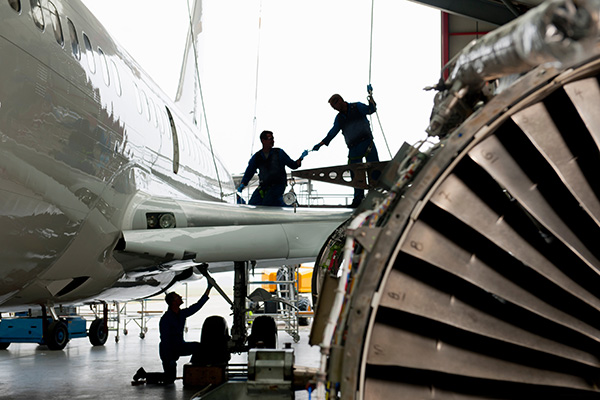Manufacturing operations will always produce waste streams, which must be addressed for the sake of worker safety and the environment.
By Mike Hook, Sales & Marketing Director, PRAB
Many manufacturers are facing difficult decisions regarding waste management and how best to address it.
For industries such as aerospace and automotive that work toward achieving technological advancements, many do not always emphasize the value of their waste management and recovery processes and relegate them as secondary tasks. The issue with such a strategy is the danger of cutting into an operation’s revenue as stricter environmental compliance regulations and economic shifts become prominent.
Depending on production scale, many manufacturing facilities may produce hundreds of waste streams, which can create significant health, safety and environmental concerns. Without quality processes to sufficiently manage these waste streams, facilities are at risk for fines, compliance penalties and revenue loss—all potentially in the millions of dollars.
For compliance managers and suppliers of waste reduction and recycling systems, securing capital funding for waste stream management is a common struggle. Establishing stakeholder buy-in is key to advancing waste stream processing. Here are a few tactics to consider for getting decision-makers on board.

Environmental responsibility and sustainability are equally important to the manufacturers’ bottom line, often due to significant financial penalties stemming from failure to comply with local, state and federal waste regulations.
But developing processes to support sustainability can not only reduce operating expenses, but also be a way to generate revenue.
Hazardous waste handling remains one of the most strictly enforced regulations in the U.S., and stakeholders must be aware of the scope of liabilities associated with metal scrap and fluid disposal.
Storing spent cutting fluids at the facility is a significant environmental risk on its own, but chips and turnings coated in hazardous fluids are also a liability for the manufacturer if a lawsuit is filed for improper hazardous material disposal. The more volume of spent fluids or oils a facility hauls out to be recycled, the greater the risk of implication should any disposal issues occur.
A proactive approach to fluid and chip remediation allows manufacturers to prove good intent, which may help companies protect themselves from liability issues.
At minimum, manufacturers should use ISO 14001 to establish an environmental compliance program.
Although this family of standards does not state specific requirements for environmental performance, it establishes accepted criteria that can guide companies in shaping their environmental management system.
The standard offers third-party accredited certification, although it is not required.
Operations can still benefit from the guidance provided in the standard in several ways:
A smart place to begin an environmental, health and safety assessment is with a company’s machining operation.
Common manufacturing equipment like screw machines, gantry mills, CNC lathes, and drills can produce significant quantities of hazardous scrap metal and waste fluids. The key to improving both workplace safety and bottom-line benefits often lies in successfully reclaiming and recycling these materials.
Operations such as grinding and honing, recycling and even cleaning that generates wash and mop water—should be included in the assessment. With the increasing value of water, recycling and reclamation strategies to reduce wastewater volumes will help shrink water and disposal expenses.
While cookie cutter processing equipment provides convenience, it is not a cost-effective strategy in the long run. Partnering with an experienced provider of waste stream management systems is critical to maximizing ROI and reducing cost of ownership.
A supplier who performs full laboratory testing during the spec process provides several key benefits to companies considering updating their waste stream processing equipment. Test-processing metal scrap and fluids will help determine:
Suppliers that execute laboratory analysis are much more likely to provide the equipment and processes tailored for the application, shorten lead times and define capabilities before purchase. The more detailed the specification process, the higher rates of system reliability.
1. Modify Metal Scrap
Reducing the amount of metal scrap in the waste stream is pivotal to efficient solid waste material management. Manufacturers in the aerospace industry among others are updating their processing systems more often to decrease the volume of metal scrap generated at the front end.
This is where a crusher or shredder at the CNC conveyor discharge is beneficial because it will:
An additional benefit of running metal scrap through a shredder or crusher is that it transforms it into shovel-grade material that can be processed in a wringer. Modern chip wringers utilize up to 700g of centrifugal force, which removes more than 98% of liquids from the scrap. The resulting dry chips carry more value at the scrap dealer, and can be sent away pneumatically, gravitationally to lugger boxes, into trucks or storage silos.
Briquetters are a particularly effective way for manufacturers to comply with environmental regulations while maximizing waste material value. Briquetter systems that feature dual compression technology use high compressive force from opposing cylinders to form extremely dense pucks that are up to 99% dry. These pucks are as much as 25% more valuable to scrappers compared to loose metal chips. Briquetters also support fluid reclamation.
2. Recycle Cutting Fluids
Once cutting fluids have been reclaimed—either through wringing or compression—a cutting fluid recycling or filtration system enables manufacturers to reuse the fluids.
This process significantly reduces haul away costs, new fluid expenditures and minimizes the need for storing hazardous fluids in the facility as they await disposal. Centralized systems with coolant management capabilities can eliminate dangerous bacteria, viruses, yeast and mold that cause skin, lung and other health problems for employees.
3. Treat Process and Wastewater
With proper treatment, the water used for various manufacturing processes can be recycled and reused. Reusing process water that was treated on-site is a sustainable practice that lowers fluid costs while complying with environmental protection regulations. Treating wastewater on-site provides the same benefits.
It is important to note, however that there is no universal solution for industrial water and wastewater treatment. To be effective, water treatment systems must be custom designed for the plant’s water and wastewater applications. Nevertheless, manufacturers that set goals to achieve Zero Liquid Discharge will reduce water and disposal costs significantly.
Manufacturers can no longer afford to shelve investments in waste stream processing improvements.
With sustainability goals on the line and the introduction of advanced processing technologies, enhanced waste stream management can be a driver in bolstering profitability and meeting operational and environmental objectives. Manufacturers should look into establishing environmental compliance practices as part of continuous improvement plans to facilitate valuable waste stream process improvements that carry long-term benefits.

About the Author
Mike Hook is the Sales & Marketing Director for PRAB and has more than 15 years of mechanical design and application experience. PRAB is a leading supplier of engineered conveyors, equipment for processing stamping scrap, turnings, chips, and spent metalworking fluids, as well as wastewater treatment solutions.
Scott Ellyson, CEO of East West Manufacturing, brings decades of global manufacturing and supply chain leadership to the conversation. In this episode, he shares practical insights on scaling operations, navigating complexity, and building resilient manufacturing networks in an increasingly connected world.